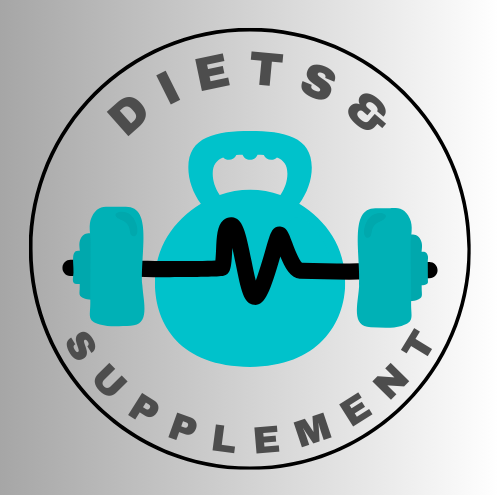 When I talk about muscle building, it’s not just about bulking up for aesthetics. It’s about strengthening the body and enhancing overall health. So, what exactly is muscle building? Muscle building, or hypertrophy, is a process that involves increasing the size of your muscles through specific types of training and lifestyle changes.
When I talk about muscle building, it’s not just about bulking up for aesthetics. It’s about strengthening the body and enhancing overall health. So, what exactly is muscle building? Muscle building, or hypertrophy, is a process that involves increasing the size of your muscles through specific types of training and lifestyle changes.
The process of muscle growth is fascinating. When you lift weights, you’re technically causing small amounts of damage to your muscle fibers. In response, your body rebuilds these fibers thicker and stronger than before – that’s muscle growth at work.
There are two main types of muscle fibers: slow-twitch and fast-twitch. Slow-twitch fibers are endurance-oriented, letting you run longer, while fast-twitch fibers are all about strength and quick bursts of energy – vital for those heavyweight lifts.
=====>Try the kettlebell home workout<=====
A well-rounded diet is crucial for muscle building. It’s your fuel. You need sufficient calories and the right balance of proteins, carbs, and fats to not only power through your workouts but also to repair and build muscle tissue afterward.
There’s a lot of noise out there about the ‘best’ way to build muscle. I’m here to clear the air and give you the facts. For starters, no, you don’t need to eat everything in sight to gain muscle, and working out every day can actually be counterproductive. Let’s focus on what really matters – a smart, sustainable approach that brings results without the myths.
Creating Your Muscle Building Plan
If you’re starting a muscle building journey, developing a solid and personalized plan is key to your success. What works for one person might not work for another, so crafting a plan that accounts for your unique situation is vital.
The first step in creating your muscle building plan is to set realistic, attainable goals. Rather than aiming for the physique of a professional bodybuilder overnight, focus on progressive, measurable increases in strength and muscle mass.
Include compound exercises in your routine. These are movements that engage multiple muscle groups simultaneously, like squats, deadlifts, and bench presses. They are effective for building strength and stimulating muscle growth because they require more energy and create an anabolic environment in the body.
Next, design a workout schedule. Consider your current lifestyle, obligations, and energy levels. Consistency beats intensity when starting out, so make sure your workout days and times are manageable. Three to four days per week can be a good frequency for beginners.
Don’t underestimate the importance of rest and recovery. Muscles need time to repair and grow after a workout. This includes getting adequate sleep and managing stress levels to facilitate recovery.
Monitor your progress and be prepared to adjust your plan. Regularly assessing your strength levels, muscle growth, and general how you feel can provide key insights into what’s working and what’s not. Flexibility in your approach will allow for continuous improvement and help avoid plateaus.
Nutrition and Supplementation for Muscle Gain
You understand now that lifting weights is just one part of muscle building. What you put into your body is equally crucial. Getting your nutrition right accelerates your gains and helps you power through each session. Here’s how you can feed your muscles for growth.
Macronutrients are the building blocks. Protein repairs muscle fibers after workouts, carbohydrates fuel your training, and fats support overall health. Prioritize lean meats, whole grains, and healthy fats in your meals.
Meal planning isn’t just for those with ambitious weight goals. Eating the right foods at the right times can significantly enhance muscle recovery. Aim to take in protein and carbs right after your workouts when your muscles are eager to soak up nutrients.
With so much hype around protein powders, you might wonder about their necessity. They’re a convenient way to meet your protein needs, especially post-workout. However, they should complement a diet rich in whole foods, not replace it.
Hydration is another key component often overlooked. Water is essential for transporting nutrients to your muscles and removing waste products. Make sure you are drinking plenty of fluids throughout the day, not just during workouts.
Vitamins and minerals might not build muscle directly, but they support the complex processes that make muscle building possible. Calcium, magnesium, iron, and B-vitamins, in particular, play vital roles. Incorporate a variety of fruits, vegetables, and fortified foods to cover these bases.
Staying Motivated and Overcoming Plateaus
Building muscle isn’t just about the effort you put in at the gym; it’s also about the mental grit to stick to your program. Overcoming the inevitable plateaus requires a blend of perseverance and smart strategy.
Start by setting short-term goals that are tangible. It could be increasing the weight you lift by five pounds or mastering a new exercise. These smaller victories keep you driven towards your larger goal.
A support system can be a game changer. Whether it’s a workout buddy or an online fitness community, having others share in your muscle building journey can lift your spirits on tough days.
Your body’s feedback is a critical guide. If you hit a snag in your progress, maybe it’s a sign to tweak your technique or swap out an exercise. Always be ready to adapt. As your body changes, so too should your routine.
Finally, don’t overlook the accomplishments you achieve along the way. Whether it’s noticing changes in your physique or feeling stronger, each positive change is a marker of your commitment. Celebrate these wins; they propel you forward, confirming you’re on the right track.
